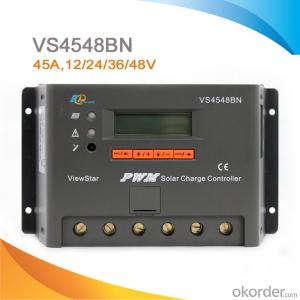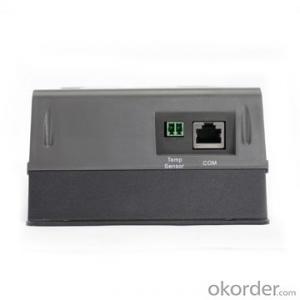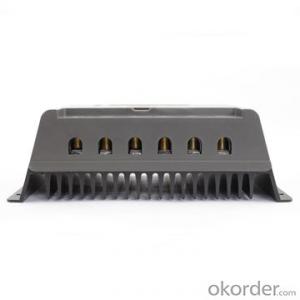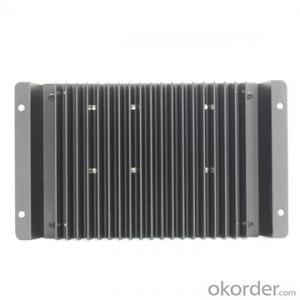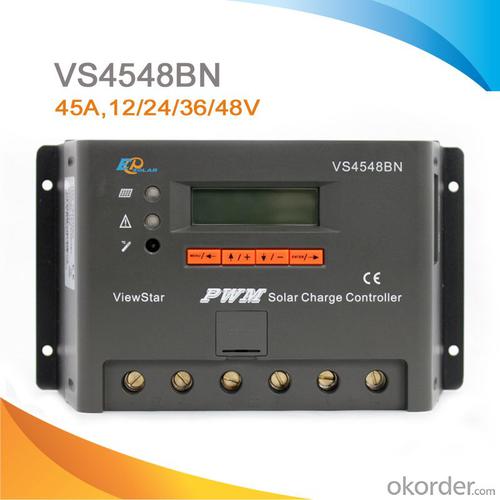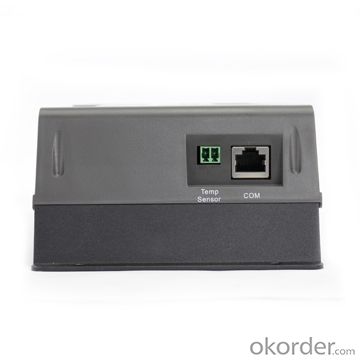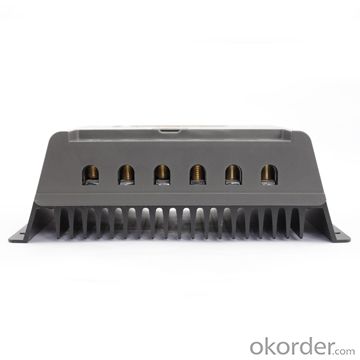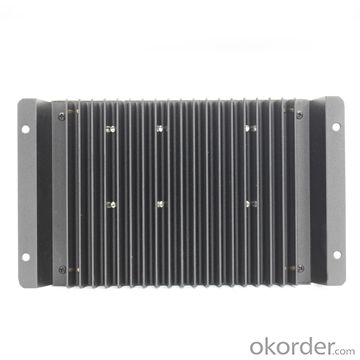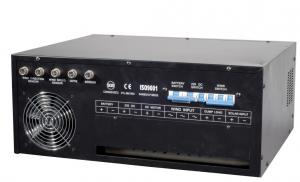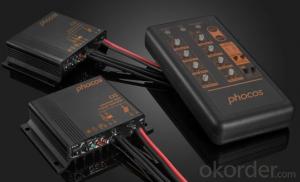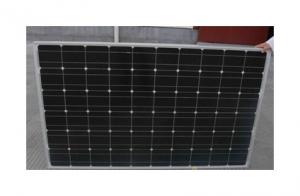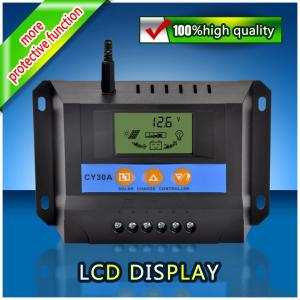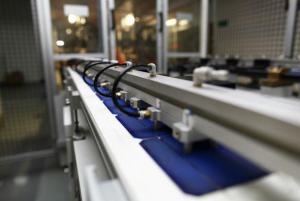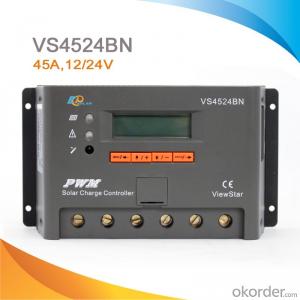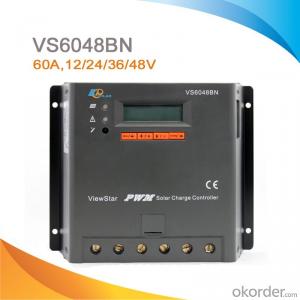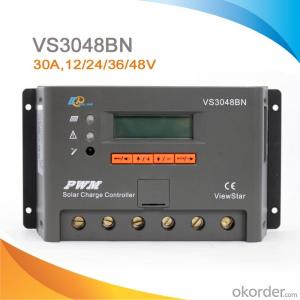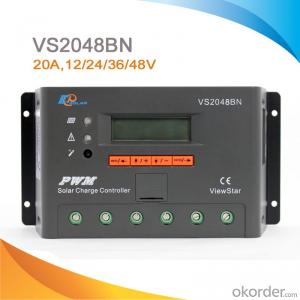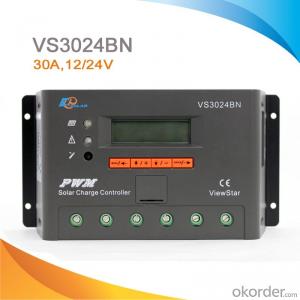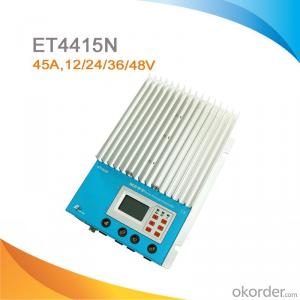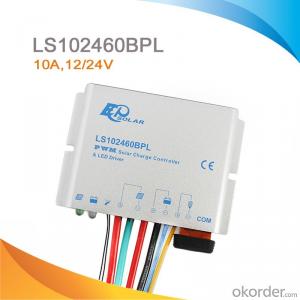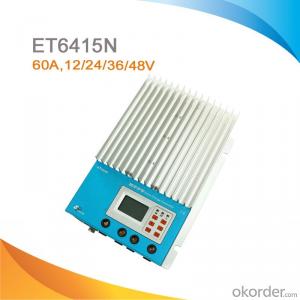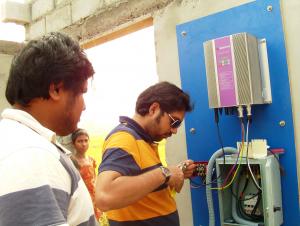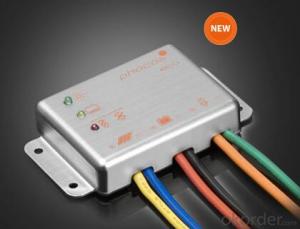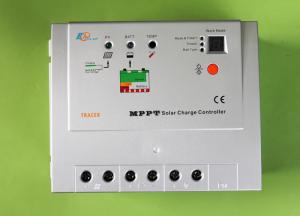North Bay Solar Charge Controllers LCD Display PWM Solar Panel Charge Controller/Regulator 45A 12/24/36/48V, VS4548BN
OKorder Service Pledge
OKorder Financial Service
You Might Also Like
ViewStar series solar controller is our new generation controller for off-grid solar system, such as street light, solar home system or small power station etc.
Features:
·Excellent EMC design
·32 bit MCU with high speed
·High efficient Series PWM charging
·Four battery type options: Sealed, Gel, Flooded, and USER
·Intelligent lighting and timer control for solar lighting system
·12 bit A/D high-precision sampling to ensure accuracy
·Use MOSFET as electronic switch
·Full control parameters setting and modification, diversified load control mode
·Humanized design of browser interface, undertake every operating conveniently
·Temperature compensation
·Adopt graphics dot-matrix LCD screen and HMI (human-machine interface) with 4 buttons,integrated menu displaying and operation
·Energy statistics function
·RS485 ports with MODBUS communication protocol
·Optional PC monitoring software and remote meter for real-time monitoring and battery management parameter setting
·Field upgradable firmware
Electronic Protections:
·PV short circuit protection
·PV reverse polarity protection
·Battery overcharge protection
·Battery over discharge protection
·Battery reverse polarity protection
·Load overload protection
·Load short circuit protection
·Overheating protection
Specification:
Nominal system voltage | 12/24/36/48V auto work | |||
Rated battery current | 20A | 30A | 45A | 60A |
Rated load current | 20A | 30A | 45A | 60A |
Max. battery voltage | 64V | |||
Equalize charging voltage | Sealed: 14.6V, Flooded: 14.8V, User-defined: 9~17V | |||
Boost charging voltage | Gel: 14.2V, Sealed: 14.6V, Flooded: 14.8V, User-defined: 9~17V | |||
Float charging voltage | Gel /Sealed /Flooded: 13.8V, User-defined: 9~17V | |||
Low voltage reconnect voltage | Gel /Sealed /Flooded: 12.6V, User-defined: 9~17V | |||
Low voltage disconnect voltage | Gel /Sealed /Flooded: 11.1V, User-defined: 9~17V | |||
Self-consumption | ≤15mA(12V); ≤10mA(24V); ≤9mA(36V); ≤8mA(48V) | |||
Grounding | Common negative | |||
Temp. compensation | -3mV/°C/2V | |||
Relative humidity | 10%~90% Non-condensation | |||
Communication | RS485 / RJ45 interface | |||
LCD temperature | -20°C ~ +70°C | |||
Working temperature | -25°C ~ +55°C | |||
Humidity | ≤95% N.C. | |||
Enclosure | IP30 | |||
Overall dimension | 200x103x58mm | 201x109x59mm | 205x119x67mm | 205x174x64mm |
Terminals | 16mm2 | 35mm2 | 35mm2 | 35mm2 |
Net weight | 0.7kg | 0.9kg | 1.2kg | 1.5kg |
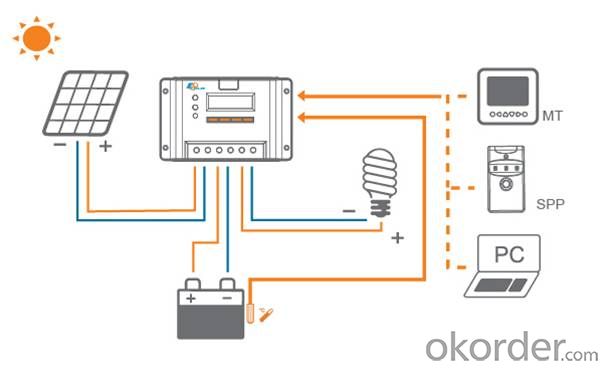
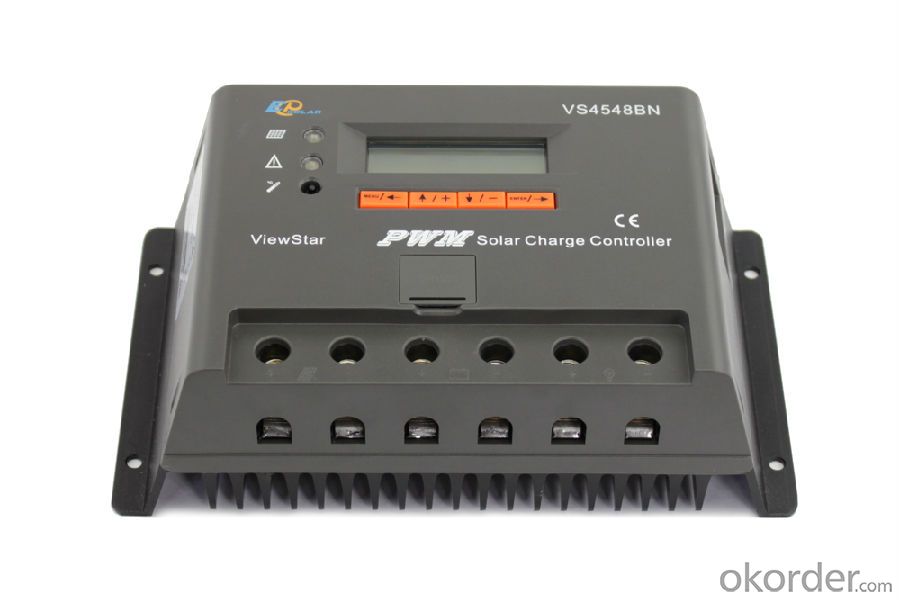
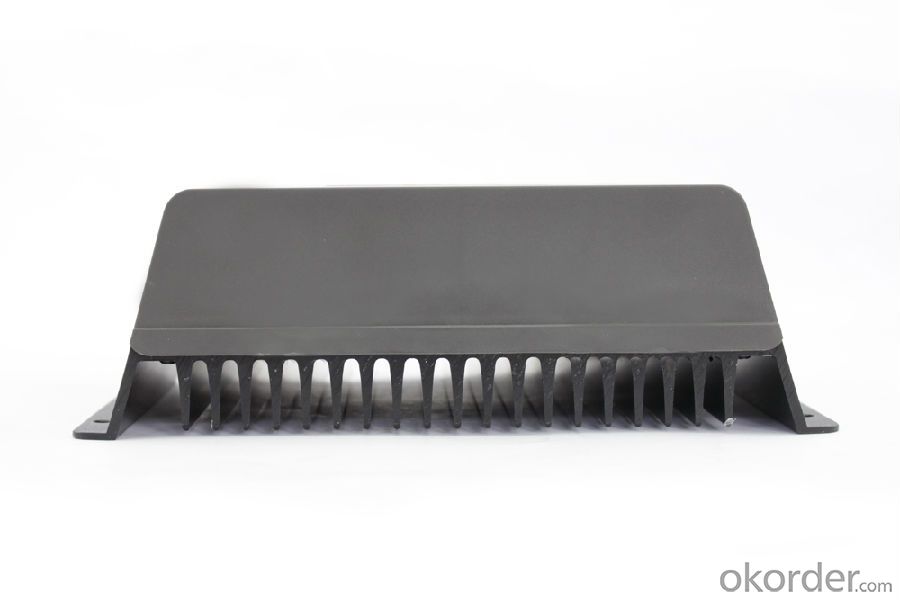
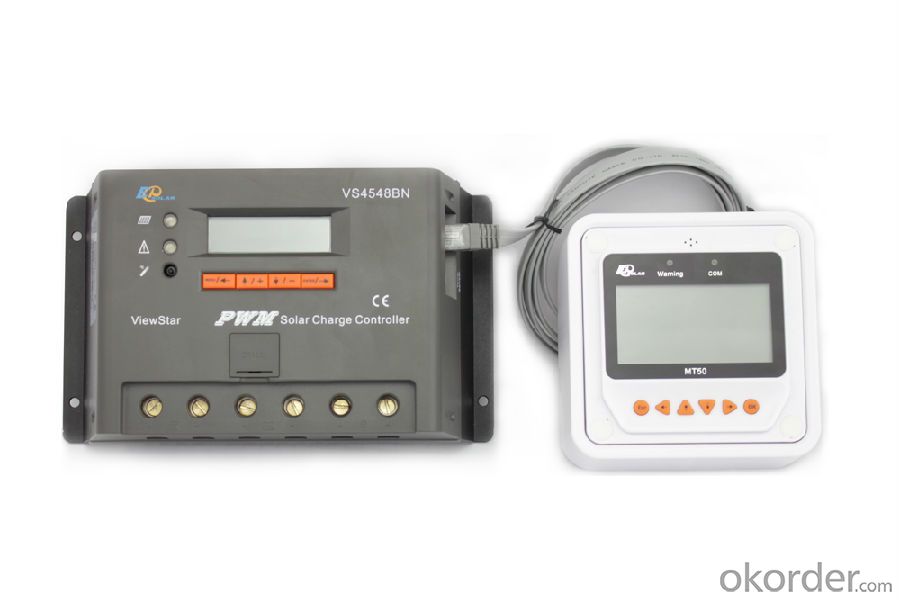
FAQ:
Q1. What is the voltage?
A1. Our 45/60A solar charge controller is 12/24/36/48V auto work.
Q2. What is the difference between MPPT&PWM?
A2. MPPT has higher efficiency, it can track the max power point and won't waste energy.
Q3. What is the efficiency of the MPPT controller?
A3. MPPT>99%, peak conversion efficiency>98%.
Q4. What is the waranty of product?
A4. 12 months.
- Q: How do I ensure proper grounding for a solar controller?
- For the safety and optimal performance of your solar system, it is crucial to establish a proper grounding for the solar controller. To achieve this, please adhere to the following guidelines: 1. Select an appropriate location: When installing the solar controller, carefully choose a location that is in close proximity to both the solar panels and the battery bank. 2. Utilize a grounding rod: Place a grounding rod in the ground near the solar controller. This rod should be constructed of either copper or galvanized steel and should measure at least 8 feet in length. Drive the rod into the ground until only a few inches remain visible. 3. Establish the grounding wire connection: Connect a grounding wire to the grounding rod using a grounding clamp. Ensure that the wire is made of copper and has a minimum gauge of 8 AWG (American Wire Gauge). Verify that the connection is secure and tight. 4. Connect to the solar controller: Attach the other end of the grounding wire to the grounding terminal on the solar controller. This terminal is typically labeled as "GND" or "Ground." 5. Ensure proper bonding: Connect all metal components of the solar system, such as the solar panels, battery bank, and any metal enclosures, to the grounding terminal on the solar controller. This can be achieved by using appropriately sized grounding wires and clamps. It is essential to guarantee that all connections are secure and tight. 6. Conduct a grounding test: Upon completing the grounding connections, it is vital to test the grounding system using either a multimeter or a ground resistance tester. This will help ensure that the resistance between the grounding rod and the system components falls within acceptable limits. 7. Regularly inspect and maintain: Regularly inspect the grounding system to identify any loose or damaged connections. Additionally, keep the grounding rod and wire clean and free from corrosion or damage. By carefully following these steps, you can establish proper grounding for your solar controller, thus enhancing the safety and performance of your solar system. If you have any doubts or concerns regarding any aspect of the grounding process, it is advised to consult a professional electrician or solar installer for expert assistance.
- Q: Can a solar controller be used with different types of solar batteries?
- Yes, a solar controller can be used with different types of solar batteries as long as the voltage and charging parameters are compatible with the specific battery type. However, it is important to ensure that the controller is designed to support the specific chemistry and requirements of the battery to optimize its performance and lifespan.
- Q: Can a solar controller be used with solar-powered indoor vertical farming systems?
- Yes, a solar controller can be used with solar-powered indoor vertical farming systems. A solar controller is an essential component of a solar power system as it regulates the flow of electricity from the solar panels to the batteries, ensuring optimal charging and preventing overcharging. In the context of indoor vertical farming systems powered by solar energy, a solar controller helps manage the energy generated by the solar panels, storing it in batteries for later use or directly powering the system. It helps maintain a stable power supply, prevents damage to the batteries, and maximizes energy efficiency. Therefore, using a solar controller with a solar-powered indoor vertical farming system is highly recommended to ensure reliable and efficient operation.
- Q: Can a solar controller be used with solar panel cooling systems?
- Yes, a solar controller can be used with solar panel cooling systems. A solar controller is typically used to regulate and optimize the charging of batteries in solar power systems. However, it can also be integrated into solar panel cooling systems to control and monitor the cooling process, ensuring efficient operation and protection of the solar panels.
- Q: Can a solar controller be used with a portable solar panel?
- Yes, a solar controller can be used with a portable solar panel. A solar controller is designed to regulate the charging process of a solar panel and prevent overcharging of the battery. It acts as a middleman between the solar panel and the battery, ensuring that the battery receives the optimal level of charge. Whether it is a portable solar panel or a fixed one, a solar controller can be used to maximize the efficiency and lifespan of the battery.
- Q: Can a solar controller be used with a solar-powered chicken coop?
- Yes, a solar controller can be used with a solar-powered chicken coop. A solar controller helps regulate the charging and discharging of batteries in a solar system, ensuring optimal performance and preventing overcharging. In a solar-powered chicken coop, the solar controller can be used to manage the power generated by the solar panels and store it in batteries for use during cloudy days or at night, providing a reliable source of electricity for the coop's lighting, heating, or other electrical needs.
- Q: What is the maximum load current for a solar controller?
- The maximum load current for a solar controller is the maximum amount of current that can be safely drawn from the controller to power the connected load. The specific value varies depending on the model and specifications of the solar controller, so it's important to refer to the manufacturer's documentation for the accurate maximum load current rating.
- Q: How does a solar controller prevent damage from power fluctuations?
- A solar controller prevents damage from power fluctuations by regulating the flow of electricity between the solar panels and the battery bank. It does this by continuously monitoring the voltage and current levels and adjusting the charging process accordingly. If there is a power surge or fluctuation, the controller will automatically reduce or cut off the flow of electricity to protect the battery and other connected devices from potential damage.
- Q: How does a solar controller prevent voltage drops in the system?
- A solar controller prevents voltage drops in the system by regulating the flow of electricity from the solar panels to the batteries. It ensures that the voltage is maintained at a consistent level by monitoring and adjusting the charging process. This prevents overcharging or undercharging of the batteries, which can lead to voltage drops and potential damage to the system.
- Q: What are the advantages and disadvantages of an MPPT solar controller?
- Advantages of an MPPT (Maximum Power Point Tracking) solar controller: 1. Increased Efficiency: MPPT controllers can improve the overall efficiency of a solar system by up to 30%. They track the maximum power point of the solar panels and adjust the voltage and current to ensure that the panels are operating at their optimal efficiency, even under varying weather conditions. 2. Better Performance in Low Light Conditions: MPPT controllers are designed to extract maximum power from the solar panels, even in low light conditions. This means that they can generate electricity even when the sunlight is not at its peak, making them ideal for areas with frequent cloud cover or shading. 3. Compatibility with Different Solar Panel Configurations: MPPT controllers can be used with a wide range of solar panel configurations, including both high and low voltage panels. This makes them highly versatile and suitable for various system setups. 4. Ability to Charge Different Battery Types: MPPT controllers are capable of charging different types of batteries, such as lead-acid, lithium-ion, or gel batteries. They have built-in algorithms that optimize the charging process for each specific battery type, ensuring maximum battery life and performance. Disadvantages of an MPPT solar controller: 1. Higher Cost: MPPT controllers are generally more expensive compared to PWM (Pulse Width Modulation) controllers, which are a simpler and cheaper alternative. The additional features and advanced technology of MPPT controllers contribute to their higher price point. 2. Complex Installation and Setup: MPPT controllers require more complex installation and setup compared to PWM controllers. They often require additional wiring and configurations to connect the solar panels, batteries, and load. This may require professional assistance or a good understanding of electrical systems. 3. Increased Maintenance Requirements: MPPT controllers are more sophisticated devices, and as such, they may require more maintenance compared to PWM controllers. Regular monitoring and occasional firmware updates may be necessary to ensure optimal performance. 4. Potential for Overheating: MPPT controllers can generate more heat during operation due to their advanced circuitry. This heat needs to be dissipated effectively to prevent damage to the controller or reduce its lifespan. Adequate ventilation and proper installation are essential to avoid overheating issues. Overall, the advantages of an MPPT solar controller, such as increased efficiency, better performance in low light conditions, compatibility with different panel configurations, and the ability to charge various battery types, often outweigh the disadvantages. However, the higher cost, complex installation, increased maintenance requirements, and potential for overheating should be considered when making a decision.
Send your message to us
North Bay Solar Charge Controllers LCD Display PWM Solar Panel Charge Controller/Regulator 45A 12/24/36/48V, VS4548BN
OKorder Service Pledge
OKorder Financial Service
Similar products
Hot products
Hot Searches
Related keywords
